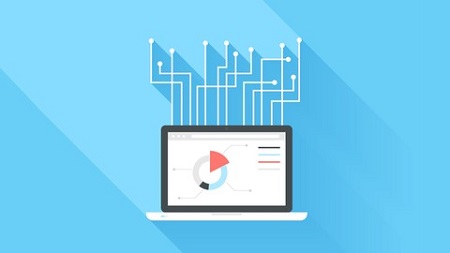
English | MP4 | AVC 1280×720 | AAC 44KHz 2ch | 11.5 Hours | 5.72 GB
Through this training we shall learn about the essentials of Raspberry Pi specifically required for Internet of Things
IoT is bringing more and more things into the digital fold every day, which will likely make it a multi-trillion dollar industry in the near future. Building your own project on IoT will help you practically learn how engineering is applied on this amazing technology.
Through this training we shall learn about the essentials of Raspberry Pi specifically required for Internet of Things (IoT) technology.
The training will include the following;
- Raspberry Pi introduction and setup
- Python for Raspberry Pi
- Accessing GPIO pins
- Using PiCamera
- Networking using sockets
- Home automation
Table of Contents
Introduction
1 Introduction to Raspberry Pi 2 and 3
2 Setup for Raspberry OS
Remote Logging
3 Raspberry PI Configuration
4 IP Address of Raspberry
5 Starting up with Software
File System in Raspberry PI
6 File System in Raspberry PI
7 Writing Text File
Creating Variables
8 Getting the Coding
9 Giving Title Name
Arithmetic
10 Writing a Program
11 Writing a Program Continues
12 Logical Operator Not
Bitwise
13 Bitwise Operators
14 Forming an Assignment Operators
15 Input from User
Selection statements
16 Selections Statement
17 Taking Input Decision
18 Defining New Functions
Functions
19 Functions with Default Arguments
20 Required Positional Arguments
Looping Statements
21 Looping Statements and Applications
22 New File in Application
23 Redefining the Values
24 Concepts in Loop
25 Using the Break Keyword
Strings in Python
26 Data Structures in Python
27 Alternate Elements in String
28 Dot Format Method
29 Slicing Operator in Strings
30 Lists in Python
List Examples and List Comprehension
31 Examples on List and Strings
32 List Comprehension
Tuples, Sets and Dictionaries
33 Tuples
34 Understanding Set Data Structure
35 Dictionary Data Structure
Classes and Objects
36 Creating Own Data Structure
37 Analyzing Change in Parameters
38 Learning more on Class and Object
39 Defining the Get Count Method
Modular Programming
40 Creating or Writing a New Module
41 Creating a Function Method
42 Running Function from the Module
43 Correcting the Import Code
44 Creating an Object of Class
45 Working with Pins of Raspberry PI
46 Using the Raspberry PI
Blinking an LED
47 Programming Raspberry Pi Pins
48 Python3 Codes on Raspberry PI
49 Blinking LED and Programming Pin
Contolling LED using Button
50 Reading an Input from the Button
51 Button and LED Working Together
52 Reading the Value of Pins
PWM
53 Varying the Intensity of Light
54 Creating a PWM Object
Networking Basics
55 Networking in Python
56 Client or the Server Address
57 IP Address and Port Number
58 Starting up SSH Client
Creating a Client Socket and Server Socket
59 Programming Server and Client
60 Connecting to the Server
61 Closing the Socket
Controlling a Light with Commands
62 Connecting Server with the Client
63 Commands from Raspberry Pi
64 Running Server on Raspberry Pi
65 Coding for running the Server
Twython API
66 Writing Python Code as Client
Twitter Update and Search Applications
67 Application Settings and Setup
68 Updating Status with Image
69 Method for Search Generator
Led Controlled by a Tweet
70 Modifying the Twthon Streamer
71 Analyzing the Object of My Streamer
72 Led Controlling by a Tweet
Twython and Gpiozero APP
73 Performing Automation on Bredboard
74 Pin Configuration for Twython and gpiozero App
75 Modifying the Led Buttons
76 Programming and gpiozero Configuration
77 Printing Results for Files
Creating server and sending email
78 Sending Email using Raspi
79 Understanding the Server to be created
80 SMTP Authentication Error
81 Creating the Connections
82 Checking the Buttons
83 Analyzing the connection on the Port
Sensor Values in Python
84 Applying Changes to the Codes
85 Emailing Sensor Values
86 Installation of Python
87 Connecting the DHT Sensor
88 Running the Programming Code
89 Importing the Button
90 Emailing Temperature and Humidity
Conclusion
91 Conclusion to IoT
Resolve the captcha to access the links!